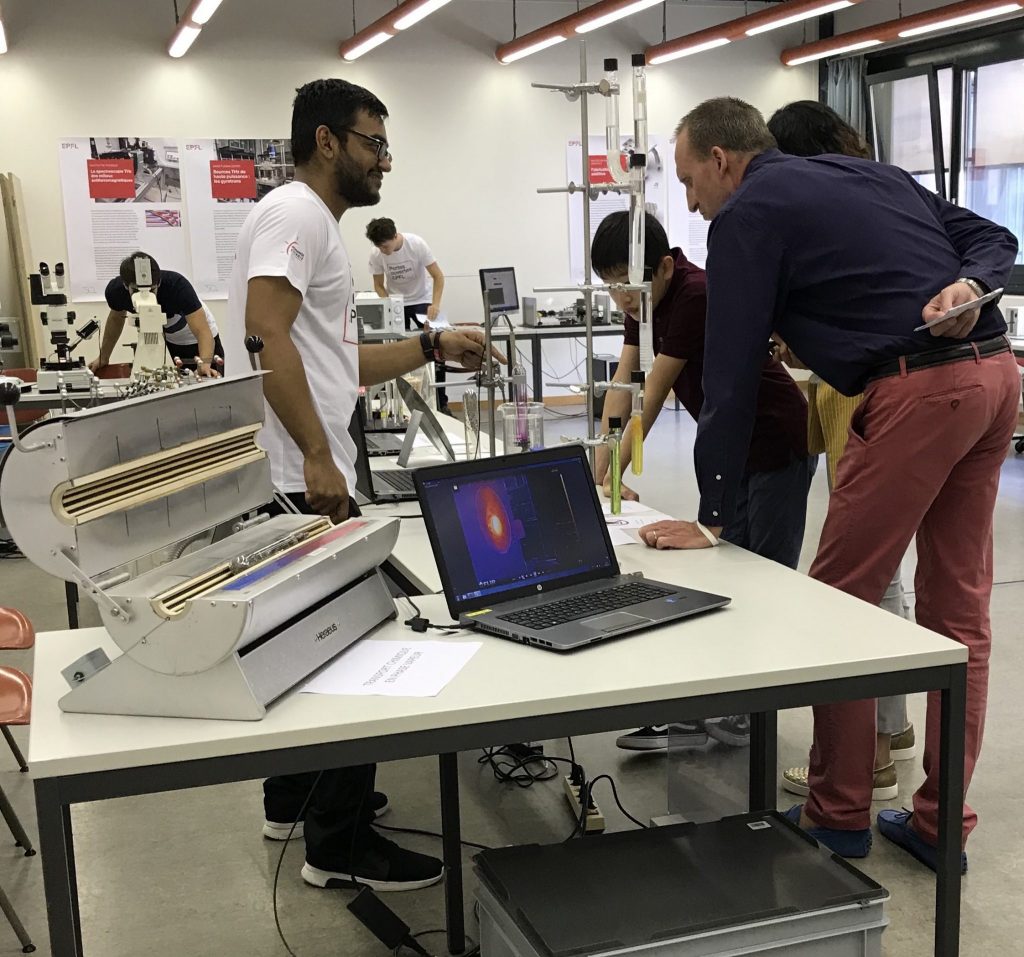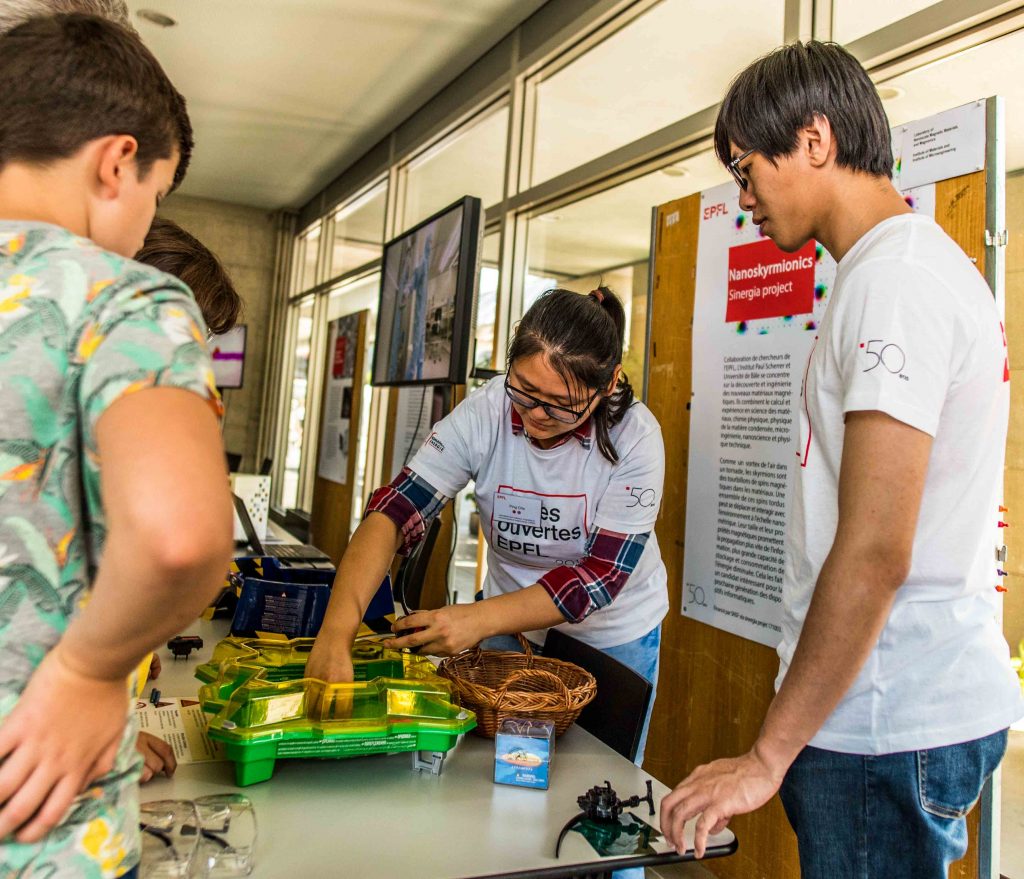September 2019 – Spirales, vortex et ondes pour la magnetoélectrique
During the open house days of EPFL (Sept. 14 and 15, 2019), members of the sinergia project explained the research on skyrmion-hosting materials. The open house days were attended by an estimated number of 40 000 people. To inform and entertain the public we showed the growth of crystals, developed a game for children, and presented a specifically designed “hour glass” exploiting a large number of permanent magnets. Thereby we illustrated that nature can form periodic lattices (such as a skyrmion lattice) in a self-organized manner.


Sinergia project researchers explain crystal growth (top) and a modified toy (bottom) by which we illustrated the movement of a spin through a periodically modulated magnetic material.
November 2018 – Nanoaimants pour détection et stockage des données: Journées d’Informations Gymnasiens
Group members of LMGN at EPFL welcomed about 40 high-school students on November 22, 2018 for an introduction session on nanomagnets and nanoscale spin structures like skyrmions. They discussed strategies in research aiming at advancements in magnetic data storage and sensing.
September 2018 – Magnetic imaging at the nanoscale: Welcome session for new students of microengineering in the laboratory of LMGN
Ping Che and Sho Watanabe welcomed about 80 new students of microengineering at EPFL on September 14, 2018. The PhD students explained research on nanomagnets, skyrmion-hosting materials and performed a a demonstration of a magnetic force microscope.
March 2018 – Podcast about molecular beam epitaxy and beyond
The sinergia network member Anna Fontcuberta i Morral (LMSC, EPFL) joined a podcast explaining epitaxial growth of nanostructures based on molecular beam epitaxy. This growth technique is applied in our sinergia project to nanoengineer skyrmion-hosting materials.
November 2017 – Open house activity at LMGN laboratory at EPFL
Group members of LMGN welcomed, informed and entertained about 35 Swiss high school students on November 16, 2017. The PhD students and a postdoc explained research on nanomagnets for applications in sensing and information technology. A specific model was designed to demonstrate the operation of a magnetic force microscope and stimulate a competition among the high school students in sensing magnetic forces.